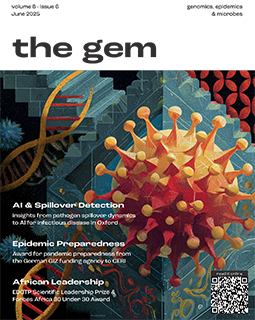Molecular HIV evidence backs accused medics
International experts in DNA forensics say that a paper published online by Nature this week provides a firm alibi for the six medical workers facing the death penalty in Libya. The workers have been charged with deliberately infecting more than 400 children with HIV in 1998.
In the study, an international team led by researchers from Oxford and Rome used the genetic sequences of the viruses isolated from the patients to reconstruct the exact phylogeny, or family tree, of the outbreak. Analysing the mutations that accumulated over time allowed the researchers to work out when different outbreaks occurred. They showed that the strain of HIV with which the children had been infected was already present and spreading locally in the mid-1990s, long before the medics arrived in Libya in 1998.
The trial of the six medical workers ended in Tripoli on 4 November, and a verdict is expected on 19 December. Despite mounting international pressure to free them, defence lawyers are pessimistic about the outcome, and Nature has fast-tracked publication to make this new evidence available before the verdict (see Nature 444, doi:10.1038/nature444836a; 2006).
There was already a body of scientific evidence indicating that the outbreak was caused not by deliberate transmission, but by poor hygiene at the Al-Fateh hospital in Benghazi, where the outbreak took place (see Nature 443, 888, 889; 2006). Analysis of hospital records suggested that the outbreak began before the medics arrived. And almost half of the HIV-infected children were also infected with hepatitis B or C, pointing to poor hospital practices as the cause.
'The new results provide independent genetic confirmation of these findings. As well as showing that the outbreaks predated the medics arrival, the study suggests that the HIV strain is related most closely to strains from West Africa, suggesting a natural introduction, probably via the many migrant workers in Libya', says co-author Tulio de Oliveira of the University of Oxford, UK.
Other phylogenetic analyses of HIV have been used in court cases involving allegations of HIV infection. The first was in 1991, when a Florida dentist was shown to have contaminated his patients. The technique has since been accepted as evidence in dozens of cases involving rape, hospital infection transmissions and people with HIV knowingly exposing others in Sweden, France and elsewhere.
Thomas Leitner of Los Alamos National Laboratory in New Mexico has provided forensic HIV evidence in more than 30 such cases over the past 15 years. He describes the de Oliveira paper as "compelling evidence that the outbreak had started before the accused could have started it', a view shared by every expert that Nature contacted (see Expert opinion").
Leitner points out that calculating evolutionary timescales is tricky, but that because HIV has such a fast mutation rate, even recent events can be pinpointed quite accurately. De Oliveira et al. have tested and evaluated the clock and its uncertainty using several methods, he says. "I find their analysis well done and timely, and hope it will affect the judgement in the Libyan court."
More information: Original paper: de Oliveira T et al. Molecular epidemiology: HIV-1 and HCV sequences from Libyan outbreak
News date: 2006-12-06
Links:
http://evolve.zoo.ox.ac.uk/Evolve/15_mins_files/nated1.pdf
Publication cited
Assessment of automated genotyping protocols as tools for surveillance of HIV-1 genetic diversity. Gifford R, de Oliveira T, Rambaut A, Myers RE, Gale CV, Dunn D, Shafer R, Vandamme AM, Kellam P, Pillay D; UK Collaborative Group on HIV Drug Resistance, AIDS (2006), 20(11):1521-9.











